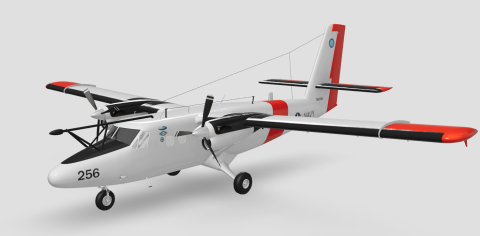
A Twin Otter research aircraft has been operated by the Center for Interdisciplinary Remotely Piloted Aircraft Studies (CIRPAS) at the Naval Postgraduate School in Monterey, CA since 1998. The aircraft supports atmospheric and oceanographic research for Office of Naval Research, National Science Foundation, Department of Energy, National Oceanographic and Atmospheric Administration, NASA, and others. The airplane is instrumented to measure the meteorological state variables, flight path and platform attitude, turbulence, aerosol particle concentration and size spectra, cloud and precipitation drop concentration and size spectra, light scatter and absorption coefficients and sea surface temperature. Ample room is in the cabin for rack-mountable guest instruments. Well characterized aerosol community inlet provides air samples into the cabin. Nadir and zenith ports provide up and down view for radiometers, sunphotometers and imaging instruments. Satellite communication system permits flight following from the ground and viewing of data in real time, as well as chat-room communication between flight scientist and science team on ground.
